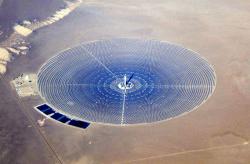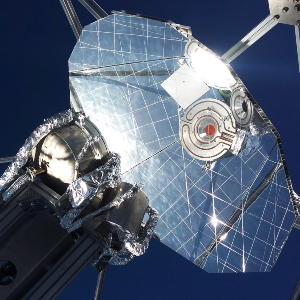Solar reactor of the new system. Credit: ETH Zurich.
–
Solar panels on the roof are no longer anything special today. But imagine that you have a similar device on the roof that produces aviation fuel from just sunlight and air. Such a system was developed by Swiss technology experts ETH Zurich. When placed on the Sun, the device benefits from carbon dioxide and water from the air, which it uses to process solar radiation into syngas, a mixture of hydrogen, carbon monoxide and possibly carbon dioxide. The plant then uses it to produce aviation fuel that is carbon neutral. Its combustion releases only as much carbon as was used in its production.
Synthetic fuels are an interesting solution in the transition to a less fossil economy. They mimic conventional liquid hydrocarbon fuels while being produced from renewable sources such as biomass, waste or air. A significant advantage of synthetic fuels is that they can replace or supplement existing fossil fuels so that they can be used in existing engines and infrastructure.
 –
–
Logo. Credit: ETH Zurich.
–
The Swiss system consists of three units. The first one traps the necessary molecules from the air. Through absorption, it obtains water and carbon dioxide, which it sends to the second unit. This is a solar reactor that uses solar radiation to drive chemical reactions. Part of this unit is a parabolic concentrator, which concentrates solar radiation into the reactor and creates a temperature of 1,500 ° C. A cerium oxide structure is placed in the reactor, which absorbs oxygen from the incoming carbon dioxide and water. This creates a mixture of hydrogen and carbon monoxide, or synthetic gas.
 –
–
Crescent Dunes Solar Energy Project. Kredit: Amble / Wikimedia Commons.
–
The synthesis gas can be used on its own or passed to the third unit of the system, where it becomes aviation fuel kerosene or methanol. The Swiss team has already tested a small version of the 5 kW system, which they placed on the roof of the building, like a solar panel. The system was intermittently irradiated with the sun for 7 hours a day, producing 32 milliliters of methanol each day.
It’s not much, but according to the creators, the main thing is that the system works. The technology can be used on a much larger scale and then, of course, produce much more fuel. Solar fuel plants could be set up, somewhat reminiscent of solar thermal power plants, also equipped with solar concentrators. The researchers calculated that 10 modules of this plant, each capable of concentrating 100 MW of solar energy, could together produce 95,000 liters of kerosene per day. That’s for one Airbus A350 flight from London to New York and back.
In order for this technology to supply all the necessary aviation fuel, it would have to cover an area of about 45,000 square kilometers. The main problem is the high input costs, which make the fuel produced in this way more expensive than the current fossil fuels it should replace. However, this can change, the situation is constantly evolving.
Video: Fuels from sunlight and air
Literature
– .


